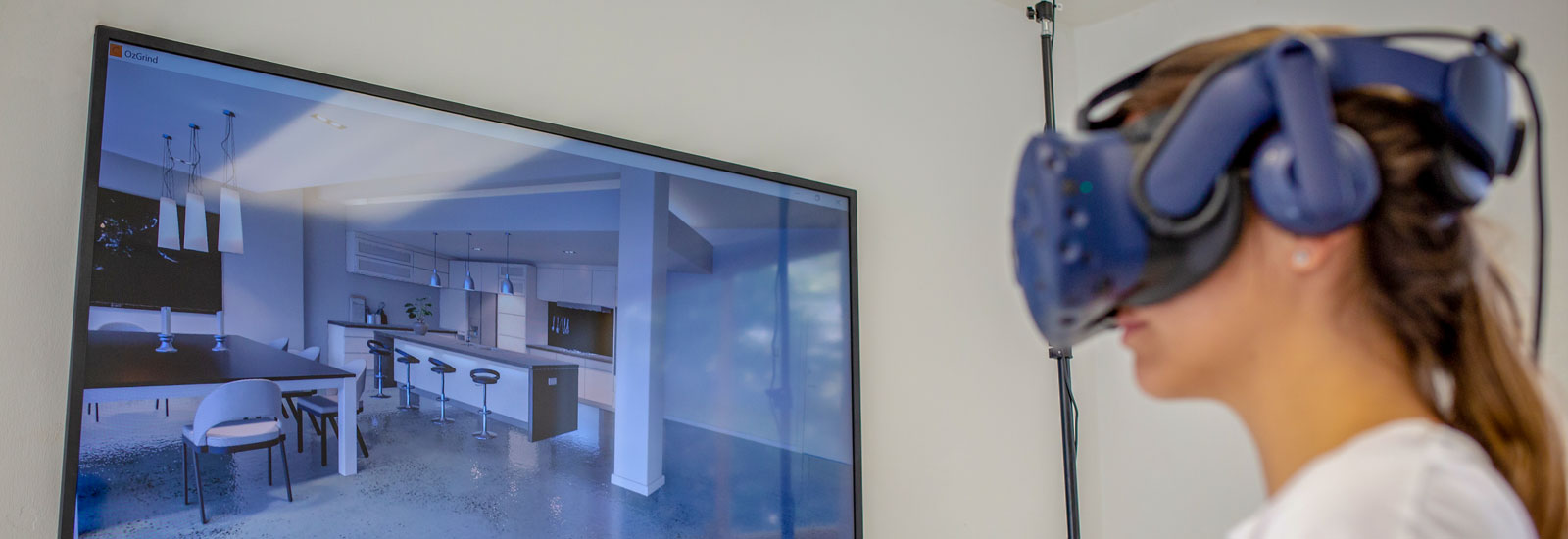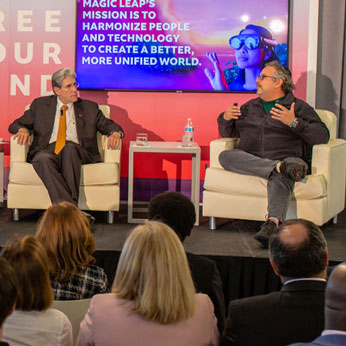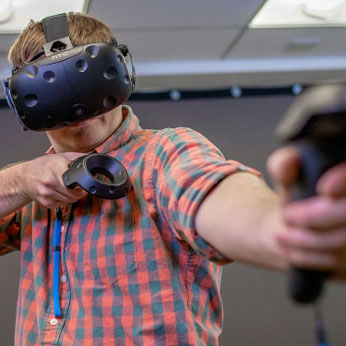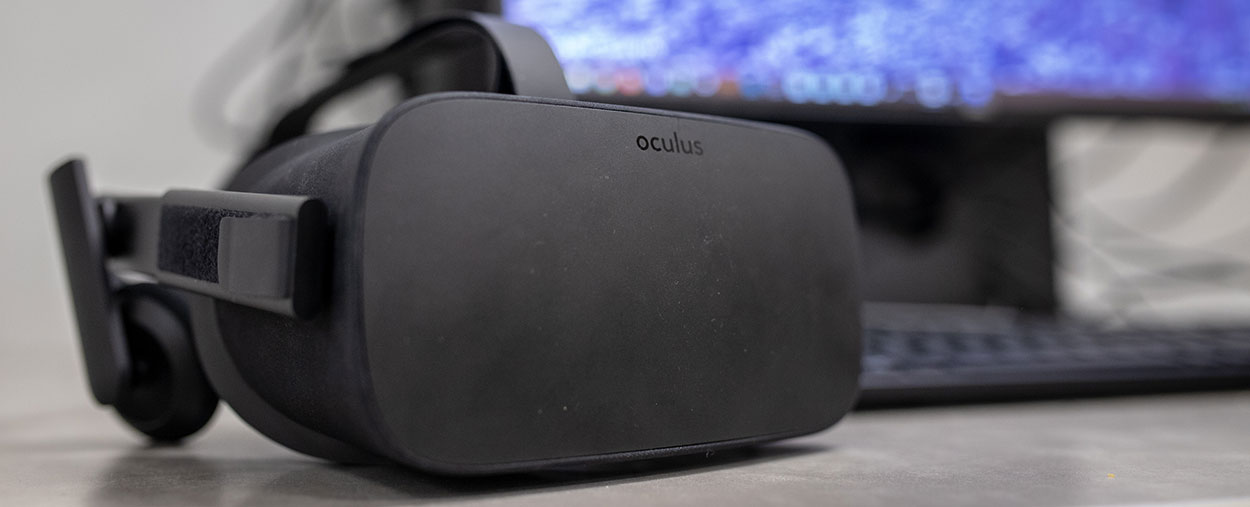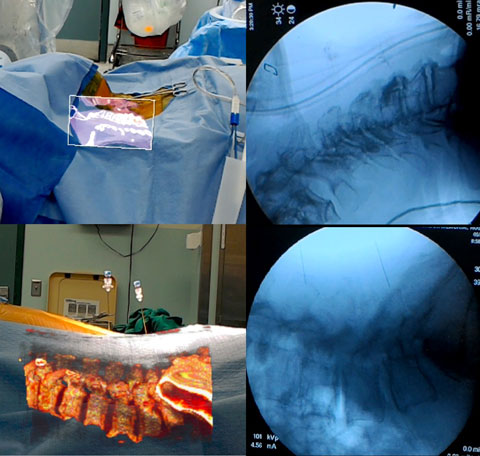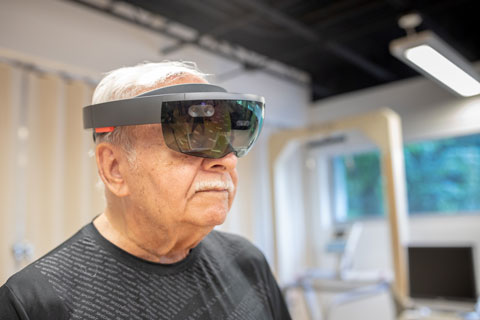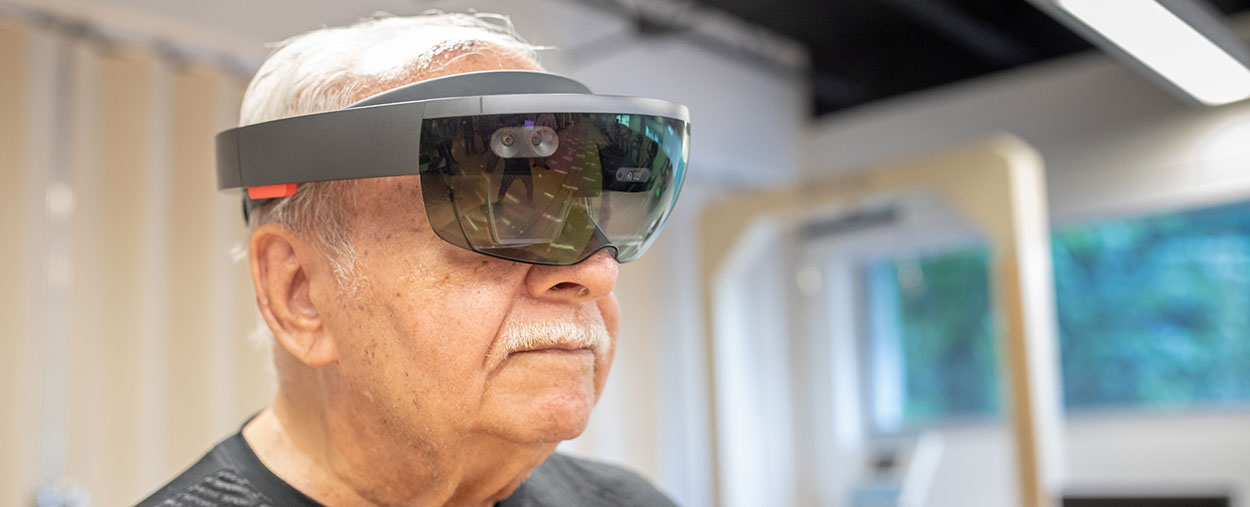by AMANDA M. PEREZ
UM News
11-11-2018
CORAL GABLES, Fla. – At the Miller School of Medicine at the University of Miami, a medical resident is researching how augmented reality can result in more precise surgeries. At the School of Architecture, 3D models enhanced through virtual reality are bringing projects to life.
And, as UM forms the first building block in its an academic alliance with Magic Leap, the Florida-based technology company founded by UM alumnus Rony Abovitz, the College of Engineering will be creating a new lab that will explore the use of spatial computing in developing mixed reality techniques.
Many of UM schools and colleges are on the front lines of looking at how differing realities can improve lives and how we live. Here’s a look at what is happening across UM in implementing differing realities in teaching and research.
SCHOOL OF COMMUNICATION
The Department of Cinema and Interactive Media in the School of Communication is preparing a new generation of innovators and leaders. The curriculum at the department is bringing together students from different majors to learn about emerging technologies like virtual and augmented reality.
A new class offered this year, “Building Virtual Worlds” developed by Associate Professor Clay Ewing, explores the construction of virtual environments where students are responsible for creating a world that can be interacted with on various platforms, including virtual and mixed reality.
Another innovative class, taught by Research Associate Professor Ching-Hua Chuan and offered to both undergraduates and graduates provides students with the ability to design and develop augmented reality applications.
Due to the high volume of interest in these emerging realities, the department is creating a high-tech lab where students can develop mixed, augmented, and virtual reality projects and games. The studio is set to open in January.
“The extended reality studio will give our students access to the latest XR devices and high-end workstations in a dedicated space,” said Ewing. “As new technologies evolve, it’s important for developers to be able to design in an environment that allows for testing in the space they are being designed for.”
The School is now offering a new undergraduate Interactive Media major that equips students with design skills and a technological fluency that allows them to explore the expressive possibilities offered by emerging forms of communication.
“Starting a new program is difficult, but the thriving culture within our master’s program inspires people entering into our undergrad program to strive and create something bigger and better. There’s a lot of energy,” said Kim Grinfeder, founder and director for the Interactive Media Program.
SCHOOL OF ARCHITECTURE
The School of Architecture this year opened a new Virtual Reality Lab within its research-oriented RAD-UM lab.
“Virtual, augmented, and mixed reality have been hyped for years but new technology is now delivering the promised goods,” said Rodolphe el-Khoury, dean of the School of Architecture and expert on the Internet of Things. “We are vigorously embracing the new tools and excited about exploring the new territory with faculty and students.”
Supervisor of the RAD Lab, Christopher Chung, believes virtual reality is a valuable tool in Architecture.
“Design is a big part of architecture. Traditionally you communicate your design through plans, sections, and perspective drawings; now we can create 3D models that help represent and convey your idea. Using VR, architects can actually build a 3D model and have clients enter the life-like space,” said Chung.
Virtual reality can also help the process of research when crafting a project. VR and AR have the potential of determining how a building can be affected by the sun, or even how wind patterns interact with a structure.
Chung is hopeful the technology can influence how future School of Architecture students conduct their end-of-term final review, a tradition that has long defined architectural education in North America.
“I believe it won’t be too far in the future where students can conduct their final review at SoA inside their building using VR where critics can virtually walk inside and tour the space,” said Chung.



